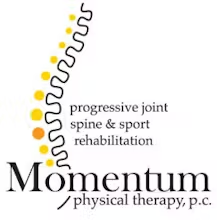Description:
The pelvic floor provides support for abdominal organs, maintains urinary and fecal continence and allows for sexual function. When these muscles develop dysfunction, it can be a source of pain and embarrassment for both men and women. We offer an individualized program to treat the specific muscle spasm or weakness that often accompanies pelvic floor dysfunction.
The program uses the benefits of physical therapy to help restore healthy movement, function, and comfort for a number of *female and male diagnoses. *We offer one-on-one treatment every visit with a skilled licensed Physical Therapist specifically trained in pelvic floor rehabilitation. Your evaluation will include taking a thorough history of your condition. Next we will assess the pelvic floor and related regions in your body to identify what other structures might be contributing to your condition. A treatment plan will be developed by your Physical Therapist to address your specific condition. Treatment techniques include manual treatment, modalities, education, and exercise.
Common Conditions we treat:
*Bladder Dysfunction*
- Urinary incontinence: stress, urge, and mixed
- Overactive bladder
- Urinary frequency/urgency
- Voiding difficulties
*Bowel Dysfunction*
- Fecal or gas incontinence
- Constipation
*Pelvic Pain Conditions*
- Chronic pelvic pain
- Male pelvic pain or prostatitis
- Pudendal neuralgia or neuropathy
- Interstitial cystitis or painful bladder syndrome
- Levator ani syndrome
- Coccydynia (tailbone) pain
*Sexual Dysfunction*
- Vulvar vestibulitis
- Vaginismus (pelvic floor muscle spasms)
- Dyspareunia (painful intercourse)
*Pelvic Organ prolapse*
*Post-Surgical Conditions*
- Cesarean Sections
- Bladder Repairs
- Hysterectomies
- Post laparoscopic surgery
What to expect on your first treatment:
- Thorough one-on-one evaluation of current condition
- Questions about your eating, drinking, voiding and social/sexual habits
- Total body postural & muscle assessment
- We will perform an external exam and possibly an internal exam, if appropriate.
Incontinence
Incontinence is the loss of bladder or bowel control, resulting in involuntary leakage of urine or feces.
Pelvic floor muscle weakness, resulting in a reduction of muscular support for the bladder, uterus or rectum, may be the cause. The muscles, because of disuse, are unable to tighten and keep the openings closed.
Incontinence of urine may be termed:
- Stress (leakage with physical activity, coughing, sneezing or laughing)
- Urgency or Frequency (involuntary bladder emptying whenever the sensation of urge is felt)
Involuntary leakage of feces and gas can be the result of chronic constipation or trauma.
Behavioral assessment of food, beverage and medication consumption can identify contributing factors.
Treatment often includes:
- Retraining bowel and bladder habits.
- Abdominal muscle rehabilitation.
- Pelvic floor muscle rehabilitation (with or without electrical stimulation).
Pelvic Floor Tension/Pain
Pelvic floor muscle tension or pain may occur in the anatomical sling of muscles which support the bladder, uterus and rectum. It can be caused by muscle imbalances, nerve or joint problems, scar tissue from surgery, childbirth, endometriosis or after radiation. Pelvic pain can also be caused by hemorrhoids, anal fissures, organ prolapse or constipation.
One who suffers from pelvic floor pain/tension may experience painful intercourse, difficulty sitting, pain in the buttocks, hips, lower abdomen or low back.
Imbalances in the muscles surrounding the pelvis can cause Vulvar Vestibulitis, Vulvodynia, Interstitial Cystitis or Vaginismus.
Rehabilitation may include pelvic floor relaxation training, manual therapies, postural and therapeutic exercise, electrical stimulation and biofeedback.
